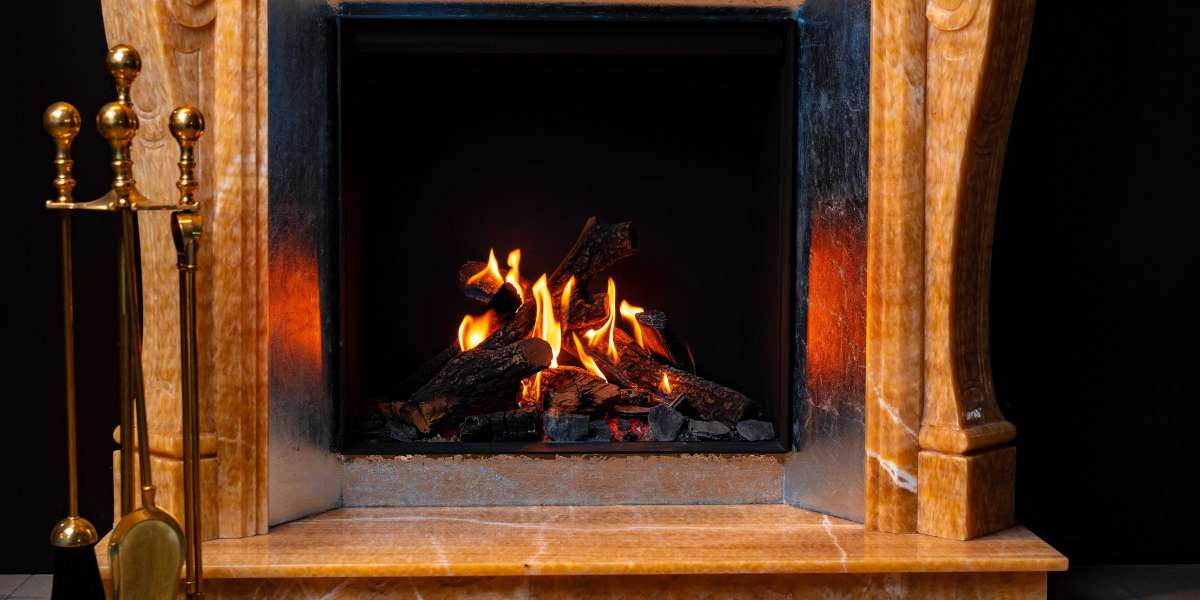 Wood stoves, in contrast to traditional open fireplaces, are engineered to use wood for combustion. This allows them meet tighter emissions regulations.
Wood stoves, in contrast to traditional open fireplaces, are engineered to use wood for combustion. This allows them meet tighter emissions regulations.Wood burning stoves emit glowing yellow flames that dance and warm crackling noises. They also give a primal feeling of warmth. However the smoke that it produces contains carbon monoxide and toxic air pollutants like formaldehyde, benzene and polycyclic aromatic hydrocarbons.
Efficient
Fireplaces and stoves that burn wood provide a beautiful and natural heat to the home, and they are incredibly efficient. A top-quality wood stove can have an Ecodesign rating of up to 77%. It is vital to get the most benefit of your log burner, especially with rising energy costs. The good news is that it's much easier than ever to do!
The moisture content of firewood is a key factor that determines how efficient a wood-burning stove is. This is the reason we suggest only using seasoned wood, which has been dried for a minimum of one year, and often two years. The more dry the wood is and the more efficient it is to burn. This results in lesser smoke and fewer harmful emissions.
A wood-burning stove also offers the advantage of being an environmentally friendly fuel source, which is great for the environment. By purchasing locally sourced wood, you can also help to support the active management and conservation of forests. This is beneficial for wildlife.
The only thing that a wood burning stove needs in terms of maintenance is to regularly remove and get rid of the ash. It's somewhat of a hassle, but it is worth it to get the maximum heat from each log. If you allow the ashes 2-3 days to cool completely, they can also be used as a non-toxic, eco-friendly melt of ice. They can be used to polish jewelry and absorb odors.
A fireplace made of wood is a timeless classic. Although they're less popular than gas fires but there's no denying the appeal and enthralling sound of a warm log fire. They're great for snuggling with on cold winter evenings and are a great method of creating a warm and inviting space in the heart of your home. Investing in a high-quality wood burner will pay for itself for a long time. Our expert chimney sweeps are available to assist you in getting the most value from your stove - give us a call now to learn more.
Low Carbon
Wood burners that are efficient and clean are the best option to save money while keeping your house warm. They also help local woodland management. This is an excellent option to help wildlife in your local area.
Wood-burning fireplaces and stoves create very little pollutant if they are properly maintained and used with dry, seasoned and dry firewood. If they are not properly maintained or when they make use of wood that is not of high quality, the smoke that is produced is a result of fine particles, often referred to as particulate pollutants that can cause irritation to lung organs and other body organs. It also contains carbon monoxide as well as toxic air pollutants such as formaldehyde, benzene, and polycyclic aromatic hydrocarbons. Inhaling these types of air pollution could cause irritation to the lung wheezing, coughing and asthma attacks. It could even cause serious health issues such as heart disease, cancer, or premature death.
Some people are concerned that wood-burning stoves can cause climate change however this isn't true. Burning wood is a carbon neutral energy source. The wood absorbs carbon dioxide throughout its life. When it is burned carbon dioxide is released into the atmosphere.
The wood is local, which decreases the amount pollution that is emitted in the transportation process. It is important to use hardwoods that have been seasoned and of high quality. They will burn longer and more evenly than softwoods.
Modern, EPA certified wood stoves and heaters (such as those made by Charlton Jenrick) have significantly lower emissions than older stoves. They have been tested and certified to meet the 2020 EPA standards which are considerably more stringent than the previous emission limits.
To avoid a build up of exhaust in your home, all wood-burning stoves must be vented completely to the outside. By keeping the flames away from the logs, and ensuring you make use of dry, seasoned wood, all our current clean burn and DEFRA exempt stoves can produce very clear exhaust. They also have particulate levels that are 60% or more below the DEFRA limit.
A wood-burning stove equipped with a catalytic converter could be the ultimate low carbon heating option. These units ignite the gasses and particulates from the initial combustion in a second stage by mixing them with superheated air. They then funnel the remaining particulates and gasses through a catalytic combustion combustor for an additional and final combustion, decreasing emissions to levels that is well below the government standards.
Clean Burn
Cleanburn wood stoves are engineered to burn fuel with the highest efficiency possible. This results in minimal emissions of particles into the air when burning wood. The air management system of the stove regulates the intake and ventilation of gases to ensure that the combustion process occurs in a safe and controlled environment. It also regulates the height of the flame to maximise heat output and minimize emissions.
This means that your chimney as well as the surrounding area will be cleaner than older stoves. Particulate matter, also known as particle pollution, is a result of incompletely burned wood can trigger respiratory issues, such as coughing and wheezing. It can also contribute to heart disease and stroke, diabetes and other serious ailments. Wood burning is also a contributor to poor air quality in cities.
The smoke from poorly combusted wood is a mixture of fine particulate pollution and hazardous air pollutants like carbon monoxide, volatile organic compounds, nitrogen oxides, benzene formaldehyde, and polycyclic aromatic hydrocarbons. These particles can be absorbed into the lungs, and other organs, causing discomfort, damage and even death. Dust particles from the air can also damage the surfaces of your home, and can give an unpleasant sludge-like feel to rooms.
If you're using a fireplace with wood burning it is essential to use high-quality firewood that has been dried and seasoned. dried. Hardwoods such as oak, ash, and beech are the best choice for heating. Hardwoods have a higher density and BTU content, and they offer more heat than softwoods.
You should also determine if your local authority has rules regarding wood burning. These could include nuisance/odor regulations and visible emissions or smoke opacity limits.
If you have a wood burner with glass doors it is essential to keep the glass clean of grime and deposits. You can use a dry towel or oven cleaner spray to do this. You can also add bicarbonate soda mixed with water to the glass.
Regular maintenance is also important for your chimney and stove. Regular chimney cleanings are necessary to eliminate creosote, and also to ensure that the flue is working properly. Also, make sure you mark dates for inspections on a regular basis in your calendar, since this will help you avoid costly repairs and prolong the life of your wood burner.
Low Maintenance
Many people prefer installing wood-burning fireplaces due to the natural warmth they generate. This type of fireplace requires a bit of maintenance and upkeep. If not cleaned and maintained regularly the chimney, flue and stove could have the potential to cause fires within your home. Fireplaces can also provide heat in the event of an electrical outage, particularly during winter storms where branches of trees may fall and power lines may be damaged.
Using a wood burner to heat your home can reduce your carbon footprint substantially compared to other fossil fuel sources like gas. Modern wood stoves, inserts and fireplaces are built to meet EPA standards (Environmental Protection Agency) which means they emit very little emissions. The more well-seasoned wood is and the better it is, the more efficient it will be, so you'll burn less of it to get the same amount of heat.
These fireplaces require some maintenance and attention, such as ensuring they are not in close proximity to burning materials and a screening is in place. The flow of air will be improved by keeping the grate free of ash and debris. This will help keep the fire burning longer and your home in good order. You should have your chimney and stove swept at least twice per year to prevent the build-up of creosote which could be a dangerous fire hazard and a blockage that can hinder the flow of air.
A wood burning stove has to be tended constantly and it may take time for a new homeowner to master the art of how to light, ignite and maintain a steady fire in the fireplace. Once you've learned the art, your wood stove will become an ideal source of warmth and comfort within your home.
Wood-burning fireplaces have been around in a variety of forms for nearly 500 years, and they've regained popularity due to their effectiveness and sustainability, as well as the natural warmth and aroma of real wood. If you're considering installing a new heater, speak with your local certified Regency dealer to find out more about the benefits of an insert or stove made of wood for your home.




